How SpringBoot AOP Redis implements delayed double deletion function
1. Business scenario
In the case of multi-thread concurrency, assuming there are two database modification requests, in order to ensure the data consistency between the database and redis,
In the implementation of the modification request, it is necessary to cascade modify the data in Redis after modifying the database.
Request 1: A modifies the database data B modifies the Redis data
Request 2: C modifies the database data D modifies the Redis data
In a concurrent situation, there will be A —> C —> D — > Situation B
(Be sure to understand that the order of execution of multiple sets of atomic operations concurrently by threads may overlap)
1. Problems at this time
A Modify the database The data was finally saved to Redis, and C also modified the database data after A.
At this time, there is an inconsistency between the data in Redis and the database data. In the subsequent query process, Redis will be checked first for a long time. As a result, the queried data is not the real data in the database. question.
2. Solution
When using Redis, you need to maintain the consistency of Redis and database data. One of the most popular solutions is the delayed double delete strategy.
Note: You must know that frequently modified data tables are not suitable for using Redis, because the result of the double deletion strategy is to delete the data saved in Redis, and subsequent queries will query the database. Therefore, Redis uses a data cache that reads far more than changes.
Delayed double deletion scheme execution steps
1> Delete cache
2> Update database
3> Delay 500 milliseconds (set the delay execution time according to the specific business)
4> Delete cache
3. Why is there a delay of 500 milliseconds?
We need to complete the database update operation before the second Redis deletion. Let's pretend that if there is no third step, there is a high probability that after the two deletion Redis operations are completed, the data in the database has not been updated. If there is a request to access the data at this time, the problem we mentioned at the beginning will appear. That question.
4. Why do you need to delete the cache twice?
If we do not have a second deletion operation and there is a request to access data at this time, it may be the Redis data that has not been modified before. After the deletion operation is executed, Redis will be empty. When a request comes in, it will The database will be accessed. At this time, the data in the database is the updated data, ensuring data consistency.
2. Code practice
1. Introduce Redis and SpringBoot AOP dependencies
1 2 3 4 5 6 7 8 9 10 |
|
2. Write custom aop annotations and aspects
ClearAndReloadCache delay double Delete annotation
1 2 3 4 5 6 7 8 9 |
|
ClearAndReloadCacheAspect delayed double deletion of aspects
1 2 3 4 5 6 7 8 9 10 11 12 13 14 15 16 17 18 19 20 21 22 23 24 25 26 27 28 29 30 31 32 33 34 35 36 37 38 39 40 41 42 43 44 45 46 47 48 49 50 51 52 53 54 55 56 57 58 59 60 61 |
|
3, application.yml
1 2 3 4 5 6 7 8 9 10 11 12 13 14 15 16 17 18 19 20 21 22 23 24 25 26 27 28 29 30 31 |
|
4, user_db.sql script
is used for production testing Data
1 2 3 4 5 6 7 8 9 10 11 12 13 14 15 16 |
|
5, UserController
1 2 3 4 5 6 7 8 9 10 11 12 13 14 15 16 17 18 19 20 21 22 23 24 25 26 27 28 29 30 31 32 |
|
6, UserService
1 2 3 4 5 6 7 8 9 10 11 12 13 14 15 16 17 18 19 20 21 22 23 24 25 26 27 28 29 30 31 32 33 34 35 36 37 38 39 |
|
3. Test verification
1, ID=10, add a new data
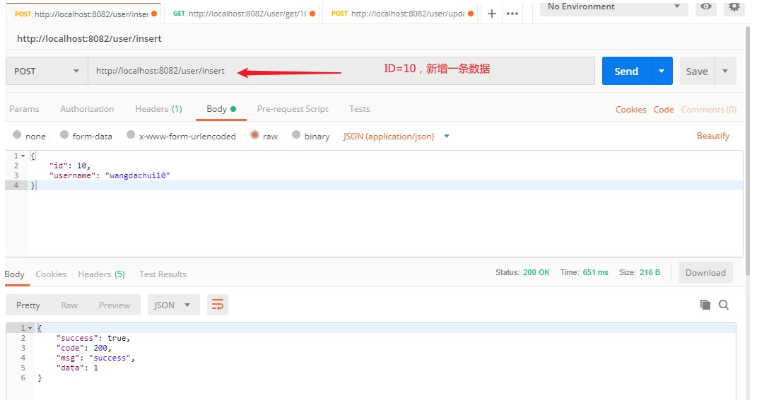
2. When querying the database for the first time, Redis will save the query results
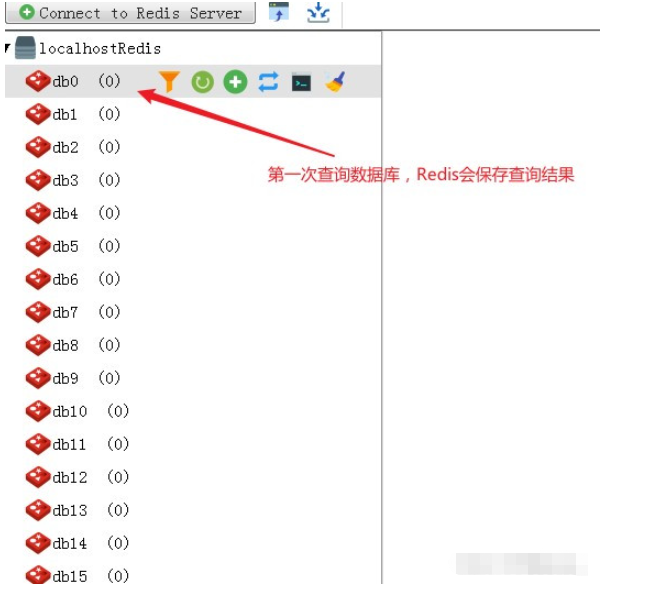
3. The first access ID is 10
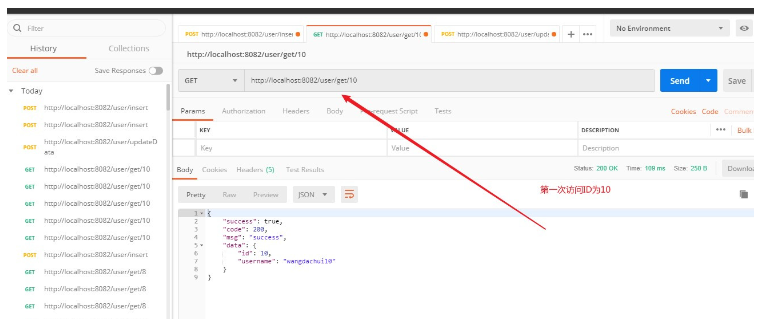
4. The first access database ID is 10, and store the result in Redis

5. Update ID For the user name corresponding to 10 (verification database and cache inconsistency scheme)

Database and cache inconsistency verification scheme:
Make a breakpoint and simulate A thread After the first deletion is performed, before A completes updating the database, another thread B accesses ID=10 and reads the old data.
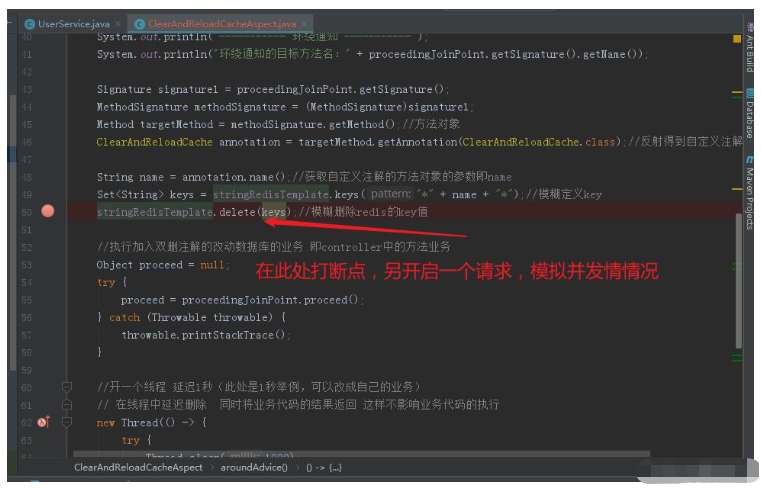
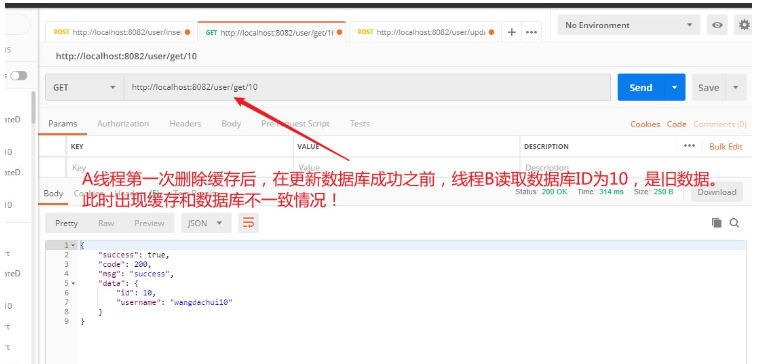
Using the second deletion, after setting the appropriate delay time according to the business scenario, after the cache deletion is successful twice, The output of Redis will be empty. What is read is the real data of the database, and there will be no inconsistency between the read cache and the database.

4. Code Engineering
The core code is shown in the red box
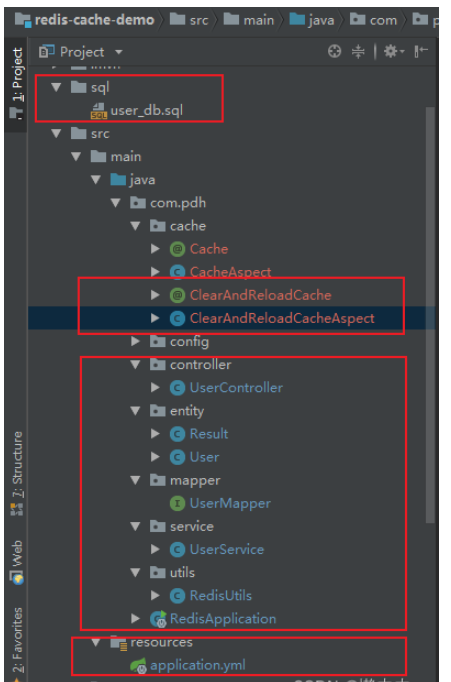
The above is the detailed content of How SpringBoot AOP Redis implements delayed double deletion function. For more information, please follow other related articles on the PHP Chinese website!

Hot AI Tools

Undresser.AI Undress
AI-powered app for creating realistic nude photos

AI Clothes Remover
Online AI tool for removing clothes from photos.

Undress AI Tool
Undress images for free

Clothoff.io
AI clothes remover

Video Face Swap
Swap faces in any video effortlessly with our completely free AI face swap tool!

Hot Article

Hot Tools

Notepad++7.3.1
Easy-to-use and free code editor

SublimeText3 Chinese version
Chinese version, very easy to use

Zend Studio 13.0.1
Powerful PHP integrated development environment

Dreamweaver CS6
Visual web development tools

SublimeText3 Mac version
God-level code editing software (SublimeText3)

Hot Topics
 1392
1392
 52
52
 How to build the redis cluster mode
Apr 10, 2025 pm 10:15 PM
How to build the redis cluster mode
Apr 10, 2025 pm 10:15 PM
Redis cluster mode deploys Redis instances to multiple servers through sharding, improving scalability and availability. The construction steps are as follows: Create odd Redis instances with different ports; Create 3 sentinel instances, monitor Redis instances and failover; configure sentinel configuration files, add monitoring Redis instance information and failover settings; configure Redis instance configuration files, enable cluster mode and specify the cluster information file path; create nodes.conf file, containing information of each Redis instance; start the cluster, execute the create command to create a cluster and specify the number of replicas; log in to the cluster to execute the CLUSTER INFO command to verify the cluster status; make
 How to clear redis data
Apr 10, 2025 pm 10:06 PM
How to clear redis data
Apr 10, 2025 pm 10:06 PM
How to clear Redis data: Use the FLUSHALL command to clear all key values. Use the FLUSHDB command to clear the key value of the currently selected database. Use SELECT to switch databases, and then use FLUSHDB to clear multiple databases. Use the DEL command to delete a specific key. Use the redis-cli tool to clear the data.
 How to read redis queue
Apr 10, 2025 pm 10:12 PM
How to read redis queue
Apr 10, 2025 pm 10:12 PM
To read a queue from Redis, you need to get the queue name, read the elements using the LPOP command, and process the empty queue. The specific steps are as follows: Get the queue name: name it with the prefix of "queue:" such as "queue:my-queue". Use the LPOP command: Eject the element from the head of the queue and return its value, such as LPOP queue:my-queue. Processing empty queues: If the queue is empty, LPOP returns nil, and you can check whether the queue exists before reading the element.
 How to use redis lock
Apr 10, 2025 pm 08:39 PM
How to use redis lock
Apr 10, 2025 pm 08:39 PM
Using Redis to lock operations requires obtaining the lock through the SETNX command, and then using the EXPIRE command to set the expiration time. The specific steps are: (1) Use the SETNX command to try to set a key-value pair; (2) Use the EXPIRE command to set the expiration time for the lock; (3) Use the DEL command to delete the lock when the lock is no longer needed.
 How to use the redis command
Apr 10, 2025 pm 08:45 PM
How to use the redis command
Apr 10, 2025 pm 08:45 PM
Using the Redis directive requires the following steps: Open the Redis client. Enter the command (verb key value). Provides the required parameters (varies from instruction to instruction). Press Enter to execute the command. Redis returns a response indicating the result of the operation (usually OK or -ERR).
 How to read the source code of redis
Apr 10, 2025 pm 08:27 PM
How to read the source code of redis
Apr 10, 2025 pm 08:27 PM
The best way to understand Redis source code is to go step by step: get familiar with the basics of Redis. Select a specific module or function as the starting point. Start with the entry point of the module or function and view the code line by line. View the code through the function call chain. Be familiar with the underlying data structures used by Redis. Identify the algorithm used by Redis.
 How to solve data loss with redis
Apr 10, 2025 pm 08:24 PM
How to solve data loss with redis
Apr 10, 2025 pm 08:24 PM
Redis data loss causes include memory failures, power outages, human errors, and hardware failures. The solutions are: 1. Store data to disk with RDB or AOF persistence; 2. Copy to multiple servers for high availability; 3. HA with Redis Sentinel or Redis Cluster; 4. Create snapshots to back up data; 5. Implement best practices such as persistence, replication, snapshots, monitoring, and security measures.
 How to use the redis command line
Apr 10, 2025 pm 10:18 PM
How to use the redis command line
Apr 10, 2025 pm 10:18 PM
Use the Redis command line tool (redis-cli) to manage and operate Redis through the following steps: Connect to the server, specify the address and port. Send commands to the server using the command name and parameters. Use the HELP command to view help information for a specific command. Use the QUIT command to exit the command line tool.




